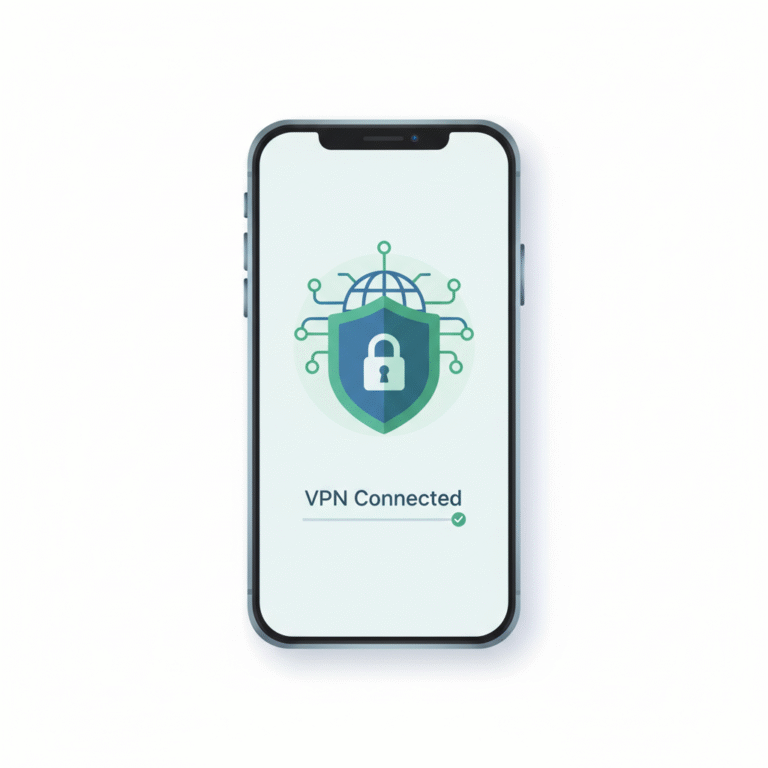A persistent question among privacy-focused users is: can a website see through your VPN? This question is not trivial—modern tracking systems, WebRTC leaks, and browser fingerprinting have blurred the line between anonymity and traceability. Understanding what information actually passes through a VPN tunnel is essential for anyone managing secure networks or conducting forensic testing.
can a website see through your vpn — what it can and can’t see
When connected to a VPN, your traffic is encrypted between your device and the VPN server. A website only sees the VPN server’s IP address, not your real one. However, visibility doesn’t end there. Sites can still collect client-side identifiers such as user-agent strings, screen resolution, cookies, and TLS fingerprints.
If the VPN provider uses shared exit nodes, multiple users appear to share the same IP—this masks identity but also triggers fraud detection systems. VPNs like NordVPN and ExpressVPN use obfuscation and DNS leak protection to prevent exposure through system misconfiguration.
Theoretically, websites cannot decrypt VPN traffic, yet they can correlate behavioral and timing patterns—especially if users remain logged in to services such as Google or Facebook.
How websites detect VPNs: shared IPs, IP reputation, and geolocation mismatch
Detection mechanisms rely less on cryptographic inspection and more on metadata. Common techniques include:
- IP reputation lists: Maintained by anti-abuse networks that flag datacenter-origin IP ranges.
- Geo-mismatch detection: A user who logs in from Germany in the morning and from the U.S. two hours later triggers anomaly detection.
- Traffic pattern analysis: Deep packet inspection (DPI) recognizes the consistent packet sizes and handshake signatures typical of OpenVPN or WireGuard.
- Behavioral telemetry: Modern systems such as Cloudflare’s bot-management assign device risk scores using TLS fingerprints and browser entropy.
Providers counter these with obfuscation servers and multi-hop routing. Obfuscation wraps VPN traffic in HTTPS-like packets, effectively concealing it within normal web flows.
WebRTC, DNS, and IPv6 leaks: how they expose your real IP
WebRTC and DNS queries bypass the encrypted tunnel if the VPN client fails to intercept them. WebRTC can expose a device’s private IP directly via JavaScript calls, while unprotected DNS resolution may reveal the real network resolver. IPv6 is another frequent leak vector; many VPNs only tunnel IPv4 traffic.
Testing tools such as “DNS Leak Test” or “BrowserLeaks WebRTC” can confirm whether exposure occurs. For a more controlled environment, network engineers often bind critical applications to the VPN interface—see how to bind qBittorrent to VPN for a secure implementation example.
Proper mitigation includes disabling WebRTC in browser settings, enforcing VPN-provided DNS servers, and disabling IPv6 on unprotected networks.
Constraints and performance:
Empirical verification of “visibility” through VPNs faces constraints. ISPs differ in DNS handling, and regional peering arrangements affect latency and routing paths. Tests run in EMEA may yield distinct results compared with APAC due to asymmetric routing policies. Moreover, VPN clients implementing kill switches or split tunneling can skew packet-capture analysis.
Performance overhead varies: AES-256 tunnels add roughly 10-15% latency; WireGuard tends to halve this due to kernel-level cryptography. Evaluators must note firmware and OS differences—Windows filters DNS differently than Linux, influencing apparent leak rates.
What your ISP, employer, or school can still see when you use a VPN
When you connect through a VPN, your Internet Service Provider (ISP) cannot view the content of your traffic or which websites you visit—they only see that you’re connected to a VPN server. However, they can observe metadata such as:
- The VPN server’s IP address and port
- The amount of data transferred and timestamps
- The VPN protocol being used (OpenVPN, WireGuard, IKEv2, etc.)
Network administrators at workplaces or schools often implement firewall inspection to detect encrypted tunnels. While they can’t decrypt packets, they may block known VPN ports or throttle VPN-related traffic. In some cases, Deep Packet Inspection (DPI) can identify VPN handshakes by their packet sequence even when encryption is intact.
To evade such detection, advanced VPN providers deploy obfuscation or stealth modes, which encapsulate VPN packets inside normal HTTPS or SSH traffic. This effectively hides VPN usage from filters—an approach discussed in-depth in AirVPN vs NordVPN: Which VPN Offers Better Security & Speed?.
Cookies, accounts, and fingerprinting: tracking that bypasses VPNs
Even with a perfect VPN configuration, tracking persistence can bypass encryption through user-side artifacts:
- Cookies and session tokens: Logging into a website links activity across IP changes.
- Browser fingerprinting: Collects entropy values such as canvas rendering, fonts, WebGL data, and timezone—effectively re-identifying users across VPN sessions.
- Login correlation: Websites can recognize returning users if they remain logged into the same Google or Microsoft account.
- Third-party scripts: Analytics SDKs and ad pixels can bridge IP-based anonymity with behavioral data.
Reducing this exposure requires sandboxing browsers, using privacy-first browsers like Brave or hardened Firefox builds, and disabling telemetry. At an enterprise level, tools like Containerized browsing environments or ephemeral VM browsing sessions mitigate fingerprint carryover.
For casual users, combining VPN usage with tracker blockers and regular cookie purges is sufficient to reduce fingerprint continuity, though it cannot guarantee complete anonymity.
How to minimize detection: kill switch, obfuscation, IPv6 handling, and leak-proof setup
To remain effectively undetectable, VPN users should integrate multiple hardening techniques:
- Enable a kill switch: This prevents data transmission if the VPN drops unexpectedly.
- Use obfuscated or stealth servers: Conceal VPN signatures from DPI filters.
- Force VPN DNS resolution: Block external DNS via firewall or OS-level policy.
- Disable IPv6 entirely or tunnel it securely if supported.
- Avoid browser autofill & persistent cookies.
Advanced setups use multi-hop chains, routing traffic through two or more VPN servers in different jurisdictions. Providers like CyberGhost VPN and Private Internet Access (PIA) include these options.
Testing for resilience involves repeated leak tests and packet capture under network failure conditions—particularly valuable for forensic engineers verifying data integrity.
Tools to audit your setup (IP/DNS/WebRTC leak tests) and interpret results
Verification should include several categories of tools:
- IP and DNS leak tests: Confirm whether requests escape to non-VPN resolvers.
- WebRTC leak testers: Examine whether local IPs are exposed via browser APIs.
- Fingerprinting evaluators: Check unique browser identifiers using open projects like Panopticlick or AmIUnique.
- Packet capture analysis: Network engineers may validate encryption envelopes through Wireshark or tcpdump.
Each tool provides partial assurance. For continuous privacy, users should schedule periodic audits—especially after system updates or VPN client changes.
If you detect recurring leaks, consult advanced guides like What is a VPN concentrator: Secure Multi-Tunnel VPN Device for insight into enterprise-grade routing layers that reinforce security boundaries.
Constraints and performance
Testing whether a website can see through your VPN introduces several variables that influence both privacy and measurable performance. Routing policies differ by country; Tier-1 ISPs may apply transparent proxies or packet shaping that modify traffic visibility. Moreover, regional VPN exit nodes vary in latency and congestion, impacting how quickly pages load and whether connection anomalies reveal VPN usage.
Hardware acceleration and encryption algorithms also affect results. WireGuard, with its ChaCha20 cipher, performs more efficiently than OpenVPN’s AES-256 on low-power devices. Still, encryption adds approximately 5–15% latency, depending on hardware offload capability. Users testing VPN visibility must ensure consistent test environments—same browser, same extensions, same geolocation settings—otherwise, fingerprint differences may skew outcomes.
Another limitation stems from time-based correlation: websites or ISPs can infer VPN usage through timing analysis, particularly when a user connects to the same destination repeatedly from varying IP addresses. These constraints underscore that “visibility” is probabilistic—while a VPN conceals direct identifiers, indirect patterns may remain observable.
Practical takeaways for minimizing exposure
- Audit your setup quarterly. Run DNS and WebRTC leak tests whenever VPN software updates occur.
- Combine privacy layers. Use HTTPS Everywhere or built-in encrypted DNS to reduce metadata leakage.
- Segment browsing contexts. Separate personal logins from anonymous sessions using different browsers or containers.
- Select reputable providers. Reviews such as ProtonVPN review: Tested in 2025 – Privacy, Speed, Free Plan highlight which services maintain strict no-log policies and consistent leak protection.
- Monitor CAPTCHAs and access blocks. Frequent CAPTCHA prompts may signal that your IP range is flagged as VPN traffic. Switch to obfuscated servers when necessary.
For organizations, network segmentation and VPN concentrators reduce lateral exposure by isolating encrypted traffic flows—particularly important for distributed teams managing sensitive systems.
Conclusion
So, can a website see through your VPN? Not directly—encryption hides your real IP and data content. Yet through metadata, browser fingerprints, or leaks, partial visibility persists. True anonymity demands layered protection: leak-proof VPN configurations, disciplined browser hygiene, and continuous testing. Engineers and privacy-minded users alike must view VPNs not as invisibility cloaks but as controlled gateways within a larger, adaptive security model.



